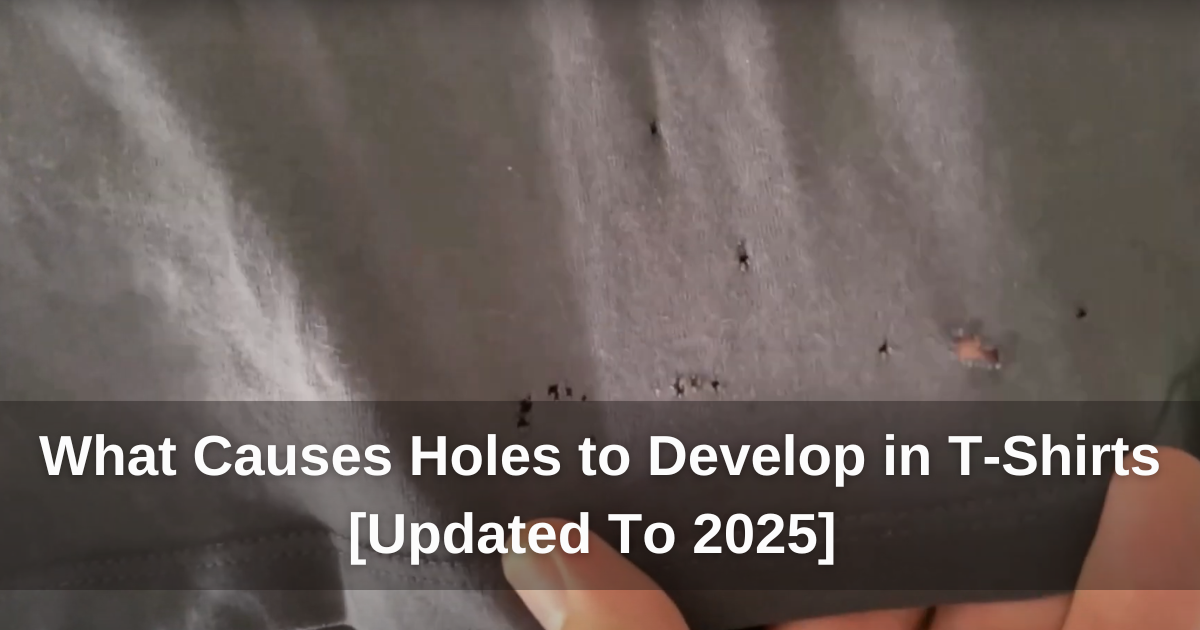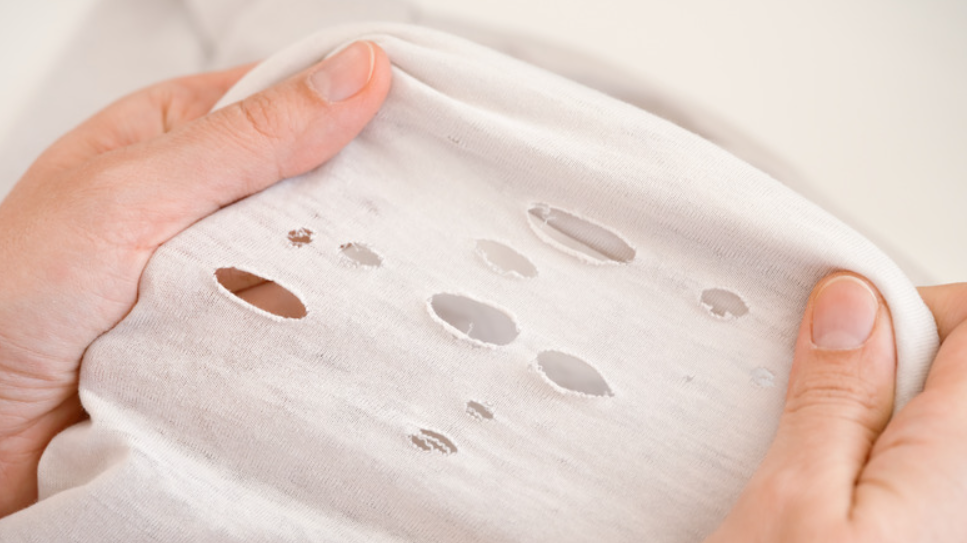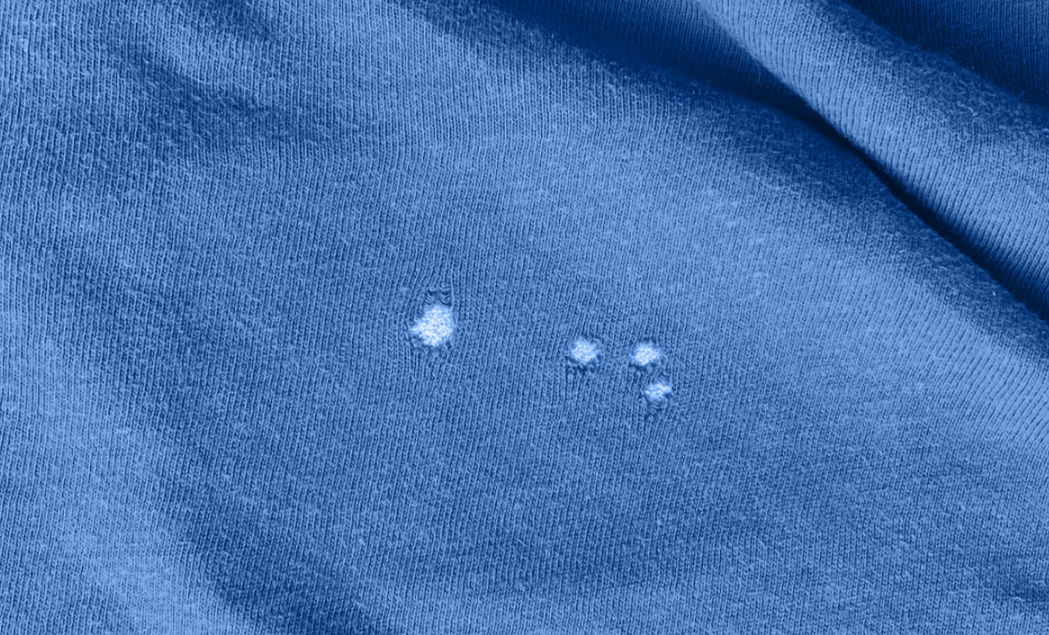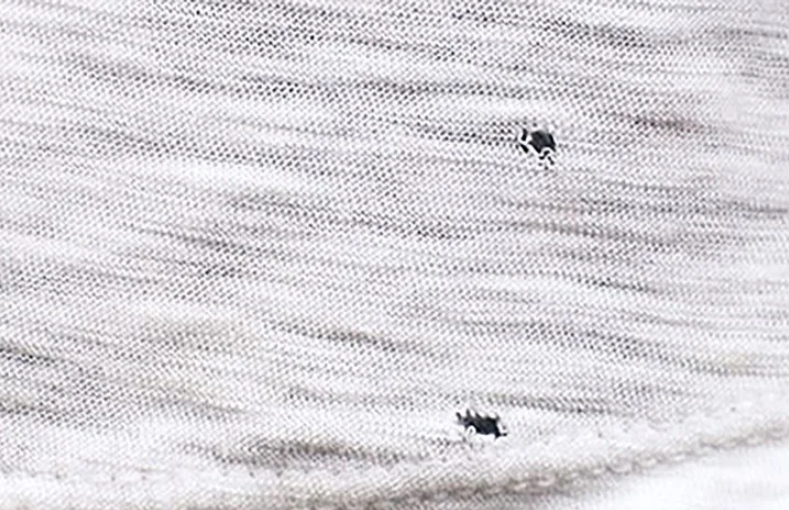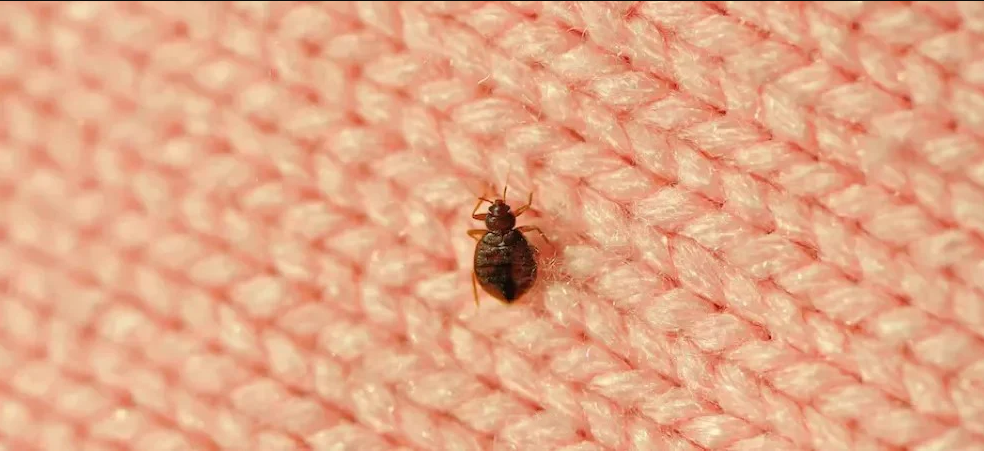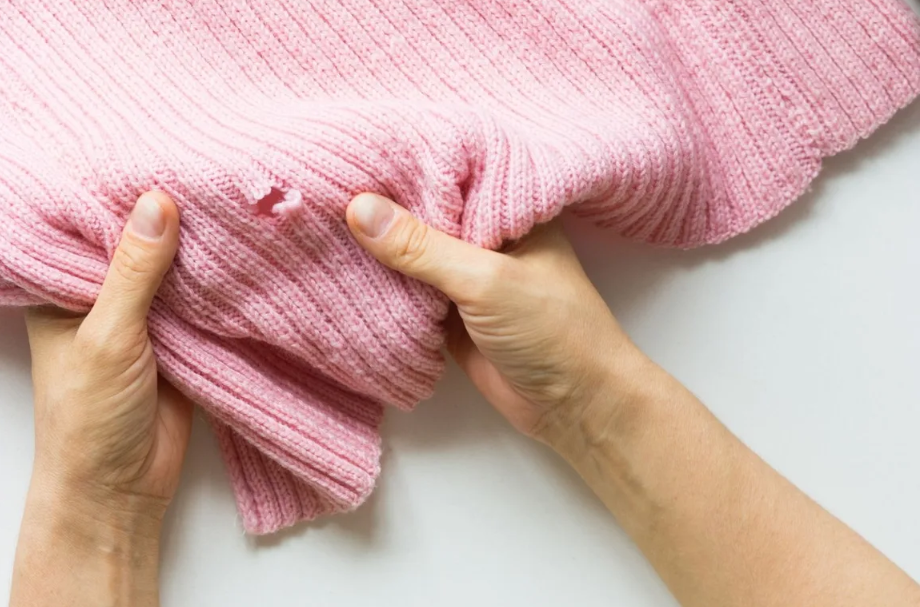We wash our T-shirts, we wear them, and we store them, yet we still find mysterious holes appearing. As we consider the culprits, it’s important to explore the various factors contributing to this common issue. Could it be the abrasive action of our washing machines or perhaps the constant friction from our daily activities? Maybe it’s exposure to sharp objects or even the influence of the detergents we use. There’s certainly more to investigate. Let’s uncover the reasons behind these pesky holes and discuss how to extend the life of our favorite T-shirts.
Key Takeaways
- Friction from daily wear, especially in high-friction zones, can weaken fibers and cause holes over time.
- Washing machines, particularly agitators, cause mechanical friction, leading to weakened fabric and holes in T-shirts.
- Chemical reactions with detergents and softeners can degrade fabric, making it more susceptible to developing holes.
- Improper storage, fluctuating temperature, and humidity can weaken fibers, increasing the risk of holes in T-shirts.
- Contact with sharp objects and jewelry can exert pressure or snag threads, resulting in holes.
Fabric Quality Issues
Fabric quality issues are a primary factor contributing to holes in t-shirts, often stemming from the type of material used and its manufacturing process. When we examine fabric composition, we note that fibers such as cotton, polyester, or blends play an essential role in the overall durability of a garment. The choice of fibers affects the tensile strength and elasticity, directly influencing how a t-shirt withstands stress and wear over time.
Thread count is another critical aspect. It refers to the number of threads per square inch of fabric. A higher thread count typically indicates a denser weave, which can enhance durability and resistance to tearing. However, in some cases, manufacturers opt for a lower thread count to reduce costs, which can result in a more fragile fabric. The quality of the threads themselves, including their thickness and uniformity, also impacts the fabric’s integrity.
Moreover, the manufacturing process can introduce weaknesses. Poor stitching, subpar dyeing techniques, or inadequate finishing processes can compromise the fabric’s strength. By understanding these elements, we can make informed choices and possibly extend the lifespan of our t-shirts.
Friction From Everyday Wear
When we consider the friction from everyday wear, it’s essential to understand how fabric wear and tear occurs due to constant clothing and surface contact. This interaction often results in abrasion, especially in high-friction zones like the waistline, where belts and pants exert pressure. Over time, repeated movement stress can exacerbate these effects, leading to the formation of small holes in the fabric.
Fabric Wear and Tear
In our daily lives, the constant friction between our bodies and clothing is a primary contributor to fabric wear and tear, leading to those pesky holes in our favorite T-shirts. This friction often results from repetitive motions such as walking, sitting, or bending, causing the fibers of the fabric to weaken over time.
The degradation process is exacerbated by the mechanical stress on seam lines and high-contact areas like underarms and waistlines. To combat this, we should consider fabric maintenance tips such as washing clothes inside out and using gentle cycles to minimize abrasion. Additionally, air drying instead of tumble drying can further preserve the integrity of the fibers.
When holes do appear, implementing fabric repair techniques can extend the life of our garments. Techniques such as darning, patching, or using fusible interfacing can efficiently restore functionality and aesthetics. Darning involves weaving new threads into the weakened area, while patching applies external fabric layers to reinforce the original. For a quick fix, fusible interfacing provides a bonded layer of stability. By understanding these strategies and applying them effectively, we can mitigate the effects of wear and tear, thereby prolonging the lifespan of our beloved T-shirts.
Clothing and Surface Contact
Our daily routines often involve significant contact between clothing and various surfaces, which can lead to friction-induced damage in T-shirts. This damage is particularly evident at high-contact points such as underarms, waistlines, and around the neck and shoulders. When T-shirts come into contact with rough surfaces, such as the edges of tables or seat belts, the surface interactions can cause the fibers to weaken. Different fabric types respond uniquely to these interactions; for instance, cotton may fray more easily compared to synthetic blends, which often have higher abrasion resistance.
As we move throughout the day, the friction generated by these surface interactions creates wear on the fabric. The repetitive rubbing action can lead to the thinning of fibers, eventually resulting in holes. Our clothing’s contact with everyday surfaces like kitchen counters, office desks, or car interiors plays a significant role in this process. The constant pressure and movement against these surfaces can exacerbate the wear, especially for lighter and more delicate fabric types. Understanding the nature of these interactions and selecting materials with higher durability could mitigate the risk of developing unsightly holes in our T-shirts over time.
Repeated Movement Stress
Throughout our daily activities, the repetitive movement stress on T-shirts manifests as friction from everyday wear, progressively deteriorating fabric integrity. When we engage in repetitive motions, such as swinging our arms or bending, the fabric of our T-shirts undergoes constant abrasion. This friction, although seemingly minor, accumulates over time, leading to fiber breakage and eventual holes.
The areas most susceptible to this wear are typically under the arms, along the seams, and around the waist, where the fabric is in continuous motion against our bodies or external surfaces.
As we move, our T-shirts experience muscle fatigue in a similar manner to our bodies. The fibers stretch and contract repeatedly, weakening the material’s elasticity. Industry experts note that this process is akin to the repeated stress tests conducted in material science, where materials are evaluated for endurance and failure thresholds.
Over time, the fibers lose their resilience, and the compromised structural integrity results in visible damage. By understanding the impact of these repetitive motions and the associated friction, we can better appreciate how our everyday activities contribute to the wear and tear of our garments, ultimately leading to those pesky holes.
Washing Machine Damage
When we consider washing machine damage, the impact of agitator-induced wear and tear on t-shirt fibers becomes evident. Agitators create mechanical friction that can weaken fabric integrity over time, especially in delicate t-shirts. Additionally, overloading the washing machine places undue stress on the fabric, increasing the likelihood of punctures and tears during the wash cycle.
Agitator Wear and Tear
Agitators in washing machines often contribute to wear and tear on our t-shirts, leading to those frustrating little holes. The core function of an agitator is to move clothes through water and detergent, ensuring effective cleaning. However, this process isn’t without its drawbacks. Agitator friction is a primary culprit in fabric degradation. As the agitator spins, it creates friction between the clothing and the machine’s central post. This repeated contact can weaken fibers, particularly in delicate t-shirt fabrics, making them susceptible to damage over time.
The agitator design also plays an essential role in how much wear and tear occurs. Traditional agitators, with their robust fins and central spindles, can be more abrasive compared to modern, low-profile designs. While newer models aim to reduce fabric stress by using gentler movements, older machines often employ rapid, forceful motions that intensify friction. This heightened agitation can exacerbate the wear on thin materials, leading to the development of holes.
Overloading Stress on Fabric
Overloading our washing machines can dramatically impact the longevity of t-shirt fabrics. When we cram too many garments into a single wash cycle, it disrupts the ideal load distribution, causing undue stress on the fabric fibers. This overcrowding results in increased fabric stretching as each item competes for space and movement. The mechanical action of the drum, combined with the weight of the overloaded contents, exerts excessive tension on the t-shirt fibers.
As the drum rotates, poorly distributed loads exacerbate points of stress, particularly where fabrics are bunched or folded. These stress points lead to micro-tears in the fabric, which can gradually develop into noticeable holes. In a balanced load, garments have the space to move freely, allowing the wash cycle to clean efficiently without overburdening any single item. However, excessive fabric stretching from overloading weakens the t-shirt’s structural integrity, making it more susceptible to damage.
To mitigate these issues, it’s important to adhere to manufacturer guidelines for load size. By ensuring proper load distribution, we can maintain fabric quality and durability, extending the lifespan of our t-shirts and preventing the formation of unwanted holes.
Chemical Reactions
Chemical reactions are often an overlooked factor that can contribute to the development of holes in our beloved T-shirts. When we wash our clothes, the detergents and softeners we use can initiate chemical reactions that lead to fabric degradation over time. Alkaline substances, commonly found in cleaning agents, can weaken the fibers by breaking down cellulose in cotton or damaging the polymer chains in synthetic materials. Chlorine bleach, another frequent laundry companion, can exacerbate this degradation by oxidizing fibers, making them brittle and prone to breakage.
As we expose our T-shirts to environmental factors, such as sunlight and pollution, additional chemical reactions occur. Ultraviolet (UV) radiation can catalyze photodegradation, a process where the molecular structure of the fabric fibers is altered, leading to loss of strength and eventual tearing. Furthermore, airborne pollutants like ozone and sulfur dioxide can react with fibers, accelerating wear and tear.
Understanding these chemical dynamics helps us make informed decisions about fabric care. By selecting pH-neutral detergents, limiting bleach use, and minimizing sun exposure, we can mitigate these chemical reactions and prolong the life of our T-shirts, keeping them hole-free for longer.
Insect Infestations
Insect infestations are an often underestimated threat to the integrity of our T-shirts, as these tiny creatures can wreak havoc on fabric fibers. When we examine the culprits, moth larvae and beetles emerge as primary offenders. Moth larvae, in particular, are notorious for targeting natural fibers like cotton and wool, which are common in T-shirts. These larvae possess strong mandibles capable of breaking down the keratin and cellulose fibers, leading to small, irregular holes. Their attraction to sweat and food stains means that even lightly soiled shirts can become vulnerable.
Beetle damage, on the other hand, is usually attributed to carpet beetles and their larvae, which consume fabric fibers as a food source. Unlike moth larvae, beetle larvae can attack both natural and synthetic fibers, making them a broader threat. The damage they cause often manifests as more uniform holes, which can compromise the structural integrity of our garments over time.
To mitigate these risks, regular inspection and cleaning are essential. We should store T-shirts in airtight containers or cedar-lined closets to repel these insects. By understanding and addressing these threats, we can preserve our T-shirts and extend their lifespan effectively.
Sharp Objects and Jewelry
Sharp objects and jewelry are frequent culprits when it comes to causing holes in our T-shirts. As we go about our daily routines, we may inadvertently expose our shirts to sharp edges found on various items. Kitchen utensils, work tools, or even the corner of a desk can exert enough localized pressure to cause fabric tears. Repeated contact with these sharp edges exacerbates the problem, weakening the fibers until a hole appears.
Jewelry, although a stylish accessory, often poses a hidden threat to our garments. The clasps on necklaces and bracelets, for instance, can snag the delicate threads of a T-shirt. Even the slightest misalignment in these jewelry clasps can lead to repeated friction against the fabric. Over time, this friction wears down the fibers, resulting in an unsightly hole. Rings and watches, particularly those with intricate designs, might also present sharp protrusions that catch on the fabric.
To mitigate these issues, we should be mindful of the items we wear and interact with daily. Identifying potential risks and making small adjustments, such as selecting smoother jewelry or modifying workspace habits, can considerably extend the lifespan of our T-shirts.
Heat and Sunlight Exposure
While proper storage is a significant factor, we must also consider the impact of heat and sunlight exposure on our T-shirts. Prolonged UV damage can weaken fabric fibers, leading to the formation of holes. When T-shirts are left in direct sunlight, the ultraviolet rays break down the cellulose in cotton fibers, a common material in T-shirts. This degradation process causes the fabric to become brittle over time. Additionally, heat exposure, whether from sunlight or high-temperature washing and drying, can accelerate this deterioration.
To better understand these effects, let’s examine the following table:
| Factor | Impact on T-Shirt Fabric | Resulting Damage |
| UV Damage | Breakdown of cellulose in cotton | Brittle, weak fabric |
| Heat Exposure | Accelerated fiber wear | Thinning of material |
| Combined Effect | Synergistic degradation of materials | Formation of holes |
| Mitigation | Use of UV-blocking treatments | Prolonged lifespan |
Laundry Detergent Effects
When it comes to laundry detergent effects on T-shirts, even with the best intentions, we often overlook the chemical interactions that can contribute to fabric damage. Detergent formulations contain active agents designed to break down oils and stains, but these same components can inadvertently harm our garments. Detergent residue, especially when not thoroughly rinsed, can accumulate on fibers, causing friction that weakens the yarn over time.
Detergents with high alkaline levels are particularly notorious for exacerbating fabric sensitivity. The alkalinity can disrupt the natural pH balance of fibers, leading to increased brittleness and susceptibility to wear and tear. Furthermore, enzymes present in many modern detergents target protein-based stains but can inadvertently erode natural fibers like cotton.
Additionally, the mechanical action of washing machines, coupled with detergent residue, can lead to micro-tears that expand into noticeable holes. To mitigate these effects, we should consider using detergents formulated for sensitive fabrics, ensuring complete rinse cycles, and avoiding overloading the washing machine. By understanding these chemical interactions, we can better preserve the integrity of our T-shirts, extending their lifespan and maintaining their appearance. Let’s approach laundry with a more informed perspective.
Frequently Asked Questions
1. Can Diet or Nutrition Affect the Longevity of T-Shirt Fabric?
Our nutrient absorption can indirectly influence t-shirt fabric longevity. Poor nutrient intake may weaken our skin’s fiber strength, causing friction against the fabric. This weakened friction can lead to increased wear and tear, reducing the t-shirt’s lifespan.
2. Do Certain Body Lotions or Oils Contribute to Fabric Damage?
Imagine our bodies as canvases, where lotion ingredients and oil residues blend like paints. These compounds can weaken fabric fibers over time, creating tiny breaches. Frequent exposure leads to structural fatigue, causing the material to fray.
3. How Does Air Pollution Impact T-Shirt Durability?
We recognize that airborne particles and chemical exposure in polluted areas can weaken fabric fibers. Let’s consider how pollutants, such as sulfur dioxide and nitrogen oxides, interact with fibers, leading to decreased t-shirt durability and eventual damage.
4. Does the Type of Hanger Affect T-Shirt Wear?
Sure, let’s blame our poor t-shirts’ demise on innocent plastic hangers, while wooden hangers remain the unsung heroes. In reality, friction, tension, and gravity—those merciless forces—affect fabric integrity, regardless of hanger material. Choose wisely.
5. Can Pet Hair Cause T-Shirt Deterioration Over Time?
Let’s explore whether pet hair contributes to t-shirt degradation. Pet hair can create fabric friction, leading to micro-tears. Over time, these small abrasions, combined with washing cycles, may escalate into noticeable deterioration, affecting garment longevity.
Conclusion
In our journey to understand the culprits behind those pesky T-shirt holes, we’ve navigated a labyrinth of factors—from fabric quality to environmental conditions. Like detectives piecing together a complex puzzle, we’ve identified friction, washing machine damage, and even chemical reactions as key suspects. Let’s remember that vigilant care is our best defense; by treating T-shirts like delicate ecosystems, we can prolong their life cycle. So, let’s inspect, mend, and store wisely to keep our wardrobe staples intact.

